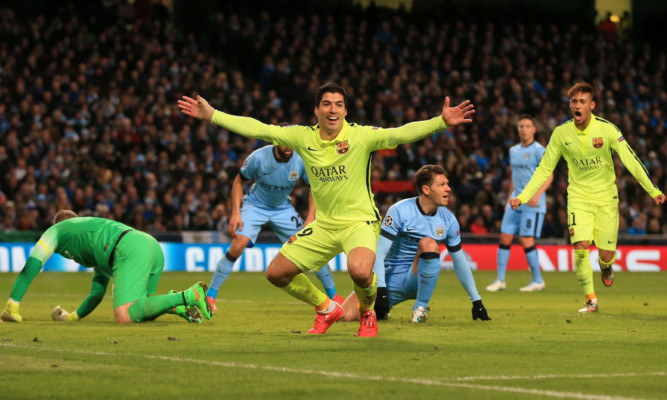
Manchester City versus Barcelona clash coincided with a famous anniversary.
Manchester City lost out to Barcelona on Wednesday, ending their Champions League campaign.
They needed to score at least twice in the process of beating perhaps the best team in European football over the past decade.
But this week also marks the anniversary of a significant event in the history of City’s opponents.
On March 16, 1938, the city of Barcelona came under aerial bombardment from the Italian Air Force.
There were more than 3,000 deaths and one of the bombs hit the club’s offices.
Both Germany and Italy provided men and equipment to aid General Franco, whose Nationalist forces were seeking to subjugate the semi-autonomous region.
Catalonia fell to the Nationalist forces, who then sought to eradicate symbols of Catalonian independence.
The club were forced to remove the Catalonian flag from their crest and had to change their name from the English “Football Club Barcelona” to the Spanish “Club de Ftbol Barcelona”.
Supporters continued to sing songs in Catalan, and the club soon became itself a symbol of anti-Nationalist sentiment.
When the Spanish Civil War had begun in 1936, several Barcelona players enlisted in the ranks of those who fought against the military uprising.
That year, club president Josep Sunyol, representative of the pro-independence political party, was murdered by Franco’s forces.
Sunyol was given martyr status and the killing became a defining moment in Barcelona FC’s history.
In 1943, Barca faced Real Madrid in the semi-finals of the Copa del Generalsimo.
Barca won the first leg 3-0 at Les Corts, their home ground until they moved to the Nou Camp in 1957.
Before the second leg, Franco’s director of state security visited the players and reminded them they were only playing due to the “generosity of the regime”.
Real Madrid won the match 111!
Despite the political situation, CF Barcelona enjoyed considerable success during the 1940s and 1950s.
They continued to defy the Franco regime and came to represent not just Catalonia, but also progressive Spaniards who saw the club as a staunch defender of rights and freedom.
With the end of Franco’s dictatorship in 1974, the club changed its name back to Futbol Club Barcelona and restored to the club crest to its original design.

Enjoy the convenience of having The Sunday Post delivered as a digital ePaper straight to your smartphone, tablet or computer.
Subscribe for only £5.49 a month and enjoy all the benefits of the printed paper as a digital replica.
Subscribe